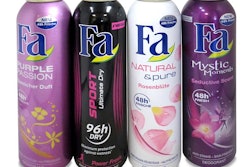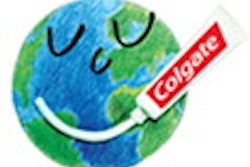Mandatory and effective procedures are at the core of every successful food packaging (and materials) safety program. In years past, less-stringent documentation standards were accepted as sufficient, because neither the FDA nor the vast majority of end users (food manufacturers) were focused on packaging, material safety, or collateral documentation. However, this has changed under the Food Safety Modernization Act (FSMA).
Large retailers require all of their food and beverage suppliers, and these, in turn, must require their packaging suppliers, to have significant programs in place that include detailed data documentation. Depending on the relationship, a partner at any point in the supply chain may require full transparency and disclosure.
Fortunately, the documentation, disclosure, and events that I’ve encountered over the years have led me to adopt the attitude that “there are always multiple ways to accomplish an objective.” There is one constant, however: All information, including how it’s captured and displayed for a particular item/event, must 1.) be clear so that all readers can make sense of it, and 2.) act as irrefutable documentation (and evidence) in the event of a crisis or question of quality, legal, or regulatory event.
The Packaging Materials Disclosure ‘Checklist’
Solid communication between packaging vendors/suppliers and their food manufacturing customers is a primary element in attaining excellence in documentation. All vendors must be vetted for best practices, and as part of this, both vendor and customer must maintain detailed, comprehensive, and precise specifications. This includes having technical and procurement personnel collaborate to develop vendor/ customer relationships that foster an attitude of disclosure, cooperation, and security.
Beyond good intentions, the packaging customer should spell out the expectations for the documentation and details the vendor should disclose. This is done in a Packaging Materials Disclosure Form (PMDF), or an equivalent variation of one that has been established. If written properly, the PMDF acts as a “checklist” for vendor disclosure. It is within the best interests of any end user to know who is manufacturing his packaging materials goods; where they are manufactured; whether the manufacturing facilities are audited and certified (and by whom); and to what extent the goods are certified and tested against meaningful standards, and validated as safe, suitable, and authorized for the intended use as food packaging.
Following disclosure of these basics, a comprehensive PMDF begins to ask specific questions that get to the heart of suitability and compliance with specific properties, regulatory compliance, and quality of an item. Areas for request of disclosure include material composition, allergens and additives, physical and chemical properties, and microbiological susceptibility. Sustainability, processing aids, handling, shipping, safety, and other categories also should be included in any PMDF.
Write a better Letter of Regulatory Compliance
Within the PMDF, an often under-considered document to be included in any vendors’ disclosure to the end user is the “Letter of Regulatory Compliance,” sometimes referred to as an “FDA Letter.” By any name, this letter, whether you are the user or the vendor, is of high value to all—but only when properly written and validated. On the other hand, it can be a detriment when the letter is vague, inaccurate, or poorly constructed.
The key required deliverables in a well-written Letter of Regulatory Compliance are as follows:
- It must be written on vendor letterhead, dated, and signed by an individual with knowledge and authority to understand the details of that which is being certified.
- It must be addressed to the customer or converter.
- It must reference the exact material(s) or item(s) by name and vendor code that it is describing, as opposed to acting as a blanket statement representing multiple unspecified products.
- It must acknowledge the use type by the customer. Also, as a best practice, it should include the category of food system and manufacturing process as specified in applicable regulatory documents such as contained in the Code of Federal Regulations (21CFR), the Food Chemicals Codex (FCC), the United States Pharmacopeia (USP), or other reference documents embraced by the scientific and regulatory communities. To clarify “food systems” and “processing methods,”consider:
A) Examples of food systems include non/high/low-acid products, emulsions, dry solids, bakery products, fats and oils, and others.
B) Examples of processing methods include high-temperature heat-sterilized, aseptic, hot-fill, cold-fill, refrigerated, etc.
- The exact names (generic at least; trade and generic both as best practices) of all layers, components, materials, processing aids, coatings, and additives must be listed separately in a table adjacent to the referenced regulation(s) or other applicable monograph number(s) under which the item is being certified for approval.
- Specific, unambiguous descriptions of limitations or exclusions from the certification.
- Specific, unambiguous descriptions of circumstances, limitations, or exclusions from any guarantees based on use, handling, or other actions specified by the vendor.
Often, vendors will include regulatory references in other “file” documents submitted to customers, including technical service bulletins, product data sheets, vendor specification sheets, and Material Safety Data Sheets (MSDS). It is wise for food companies to review these ancillary documents in the event that any regulatory references and use information could be in conflict with the regulatory letter. The need for food companies to do this should be obvious: In the event of a crisis where component or material quality or conformance is called into question, the vendor certifications and regulatory guarantees will be called into question and examined by many.
It is in the best interest of all involved that the customer clearly describes (with examples) the disclosure information required in the vendor letter of regulatory compliance. Of equal importance is to verify that the vendor is willing to make mandatory disclosures in advance of (you) testing and validating the packaging goods in order to avoid commercialization and sale of goods not supported by the detail required by your company’s quality and food safety program.
About the author: Kestenbaum brings 37 years of food and packaging experience from National Starch, General Foods, Kraft Foods, and EHA, where his consulting spans best practices, crisis management, technology, litigation, specifications development, and process/packaging safety.
Liked this article? Download the entire playbook here.
The Packaging Materials Disclosure ‘Checklist’

























